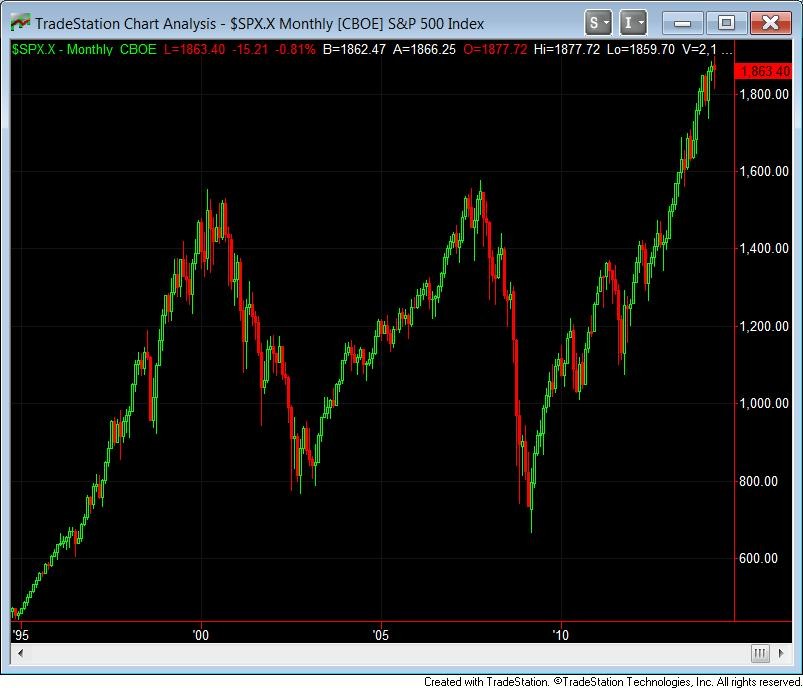The Future Is Now John Hussman
Post on: 6 Июль, 2015 No Comment

- Page Title:
- Page URL:
This page has been successfully added into your Bookmark.
164 followers
Follow
“Even a return to median bull market valuations would be brutal for the most popular tech stocks. We’re not even talking about bear market valuations, and we’re making the leap of faith, contrary to the evidence, that the quality of current revenues is as high as those generated during the past decade. To illustrate the probable epilogue to the current bubble, we’ve calculated price targets for some of the glamour techs, based on current revenues per share, multiplied by the median price/revenue ratio over the bull market period 1991-1999.
Cisco Systems: $18 ¾ (52-week high: $82)
Sun Microsystems: $4 ½ (52-week high: $64)

EMC: $10 (52-week high: $105)
Oracle: $6 7/8 (52-week high: $46)
“Get used to those itty-bitty prices. And hey, we’re being optimistic.”
In the bear market that followed, those “four horsemen” of tech would fall about 50% below the price targets noted above, except for Oracle, which halted its decline about 3/8 of a point above that target.
We’ve taken a great deal of care in recent months to emphasize that price/earnings ratios are terribly unsuitable to gauge valuation (or estimate long-term prospective returns) unless the earnings figure being used isrepresentative and proportional to the very long-term, multi-decade stream of future cash flows that will be made available to investors over time. Unfortunately, profit margins vary dramatically over the course of the normal business cycle, which demands that investors normalize earnings by accounting for the profit margins that are embedded into them at any given time.
It turns out that every popular earnings-based measure (price to trailing earnings, price to forward earnings, Shiller’s cyclically adjusted P/E, market capitalization to corporate profits) can be made significantly more reliable by pairing the P/E multiple with a consideration of the profit margin embedded within. Indeed, if we statistically relate P/E ratios and profit margins (technically their logarithms) to actual subsequent 10-year market returns, we discover that both factors enter the regression with nearly identical coefficients, meaning thatthe two can be combined without any loss of information (see Margins, Multiples, and the Iron Law of Valuation ). Of course, the product of the P/E and profit margin (or the sum of their logarithms) is simply the price/revenue ratio.
Let’s be very clear – earnings are absolutely essential to generate deliverable cash flows for investors. It’s just that profit margins vary too much to use year-to-year earnings (and to some extent, even smoothed 10-year earnings) as a sufficient statistic for those multi-decade cash flows. Revenues turn out to be much better sufficient statistics. When we look across different companies and industries, of course, price/revenue multiples should and do differ quite a bit. Low margin businesses (such as grocery chains) typically trade at very low price/revenue multiples, while high margin businesses can justify higher price/revenue multiples – provided that revenues can be expected to be maintained or expanded for decades, and the business has distinct competitive advantages that protect margins from much erosion or variation over the economic cycle. There are fewer of those latter companies in existence than people think – they’re the ones that Warren Buffett (Trades. Portfolio ) tends to gravitate toward.
The danger comes when investors drive price/revenue multiples to market-wide extremes, across all stocks and industries. At bull market peaks, investors typically fail to recognize cyclically elevated profit margins, assuming that those margins are permanent and that earnings can be taken at face value. If there is one thing that separates our views here from the bulk of Wall Street analysis, it is the historically-informed insistence that investors are mistakenly banking on record-high profit margins to be permanent. For more on this, including evidence that historical profit margin dynamics remain quite on track and have not changed a whit. see The Coming Retreat in Corporate Earnings. and An Open Letter to the FOMC: Recognizing the Valuation Bubble in Equities .
While the evidence may be alarming to some, make no mistake: The median price/revenue multiple for S&P 500 constituents is now significantly higher than at the 2000 market peak. The average price/revenue multiple across S&P 500 constituents is now above every point in that bubble except the first and third quarters of 2000. Only the capitalization-weighted price/revenue multiple – presently at about 1.7 – is materially below the price/revenue multiple of 2.2 reached at the 2000 peak. That’s largely because S&P 500 market capitalization was dominated by high price/revenue technology stocks in 2000. [Geek’s Note: as a result, if one chooses a universe of stocks by first sorting by market capitalization, one will probably find that price/revenue multiples of those stocks are lower today than in 2000]. Regardless, the historical norm for the capitalization-weighted S&P 500 price/revenue ratio is only about 0.80, less than half of present levels. The fact is that unless current record-high profit margins turn out to be permanent. against all historical experience to the contrary, the overvaluation of the broad equity market is equal or more extreme today than it was at the 2000 bubble peak.














